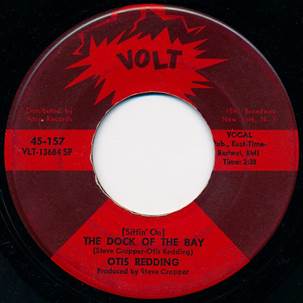Themes for Hot Stove posts often come quite by accident. This one was sparked by the Winter Olympics, a Ted Williams story and the death last week of David Ogden Stiers. The common denominator: Korea.
But first some notes from spring training. Jack Campbell, Steve Roling and David Matson have been in Arizona covering the Royals for Hot Stove. After the Royals went undefeated for the first six games, David emailed me to ask (tongue in cheek) what the Royals magic number was to win the pennant in the Cactus League. Since then, the Royals are 2-4, and the Cubs have moved into first place.
I am sort of following the team, but with so many unfamiliar names, I’m mostly waiting to see who makes the roster. I did learn the name of pitching prospect Eric Stout because he threw the ball that is in this cool photo by KC Star photographer John Sleezer:

One piece of interesting Royals news out of spring training was the signing of Lucas Duda. Right after that occurred, I heard from Hot Stove reader Jeb Bayer who pointed out the irony of Duda replacing Eric Hosmer as the Royals first baseman. Duda was the Mets first baseman who made “the (bad) throw” that allowed Hosmer to make his iconic dash to home that tied Game 5 and led to winning the World Series. The photo most fans remember is Hosmer’s head-first slide, but here is what was happening on the other side of the plate – Duda’s throw has eluded the catcher and can be seen sailing over the umpire’s shoulder:

Stats guru Bill James marked the Duda signing by saying how hard it is for him to keep “Camptown Races” out of his head when he hears the name Lucas Duda. I had to think about that for a few moments and then it hit me: “Camptown ladies sing this song, doo-da, doo-da…”.
As Hot Stove went to press, the big news was the signing of Mooooooooooose! I have already heard from my spring training reporters on this. Matson thinks the late veteran signings will push the Royals above the Vegas over/under line of 68.5 wins. Roling wonders what happened to rebuilding. I feel Steve’s pain. The “youth movement” in the infield is now Duda (32), Whit (29), Esky (31) and Moose (29).
Baseball in Korea: With the Winter Olympics out of the way, South Korean sports fans now turn their attention to baseball. Opening day is March 24, and the games will be filled with bat flips and high-spirited crowds led by cheerleaders. Baseball was introduced to Korea by missionaries in the early 1900’s, and the sport has grown to include a popular professional league and consistent success in international competition.
South Korea has also sent several players to the major leagues, ranking just below Japan for most foreign players not from Latin America. The current Korean with the longest tenure is Shin-Soo Choo (추신수) who is now with Texas and preparing for his 14th season. I checked out Choo’s baseball cards, and my favorite is the one from the 2009 World Baseball Classic. At that time, he was with the Cleveland Indians, and the card shows him in his Indians uniform below the South Korean flag. The Indians gave him permission to play and represent his country in the Classic.
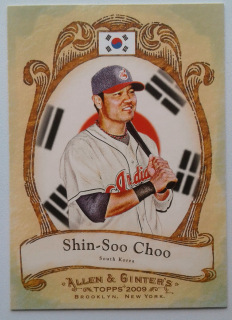
Korea and Ted Williams: Ted Williams was never in the Olympics, much less the Winter Olympics. He does have one thing in common with the ski slopes. He is frozen. After his death in 2002, his children had his body sent to the Alcor Life Extension Foundation in Scottsdale. Alcor severed Williams’ head from his body by “neuroseparation,” and the two parts are preserved separately in steel cans filled with liquid nitrogen. Presumably awaiting cryonic advances to create a chance to hit .400 again.
Williams is of course the last batter to hit .400 or better – .406 in 1941. The next season, he got a temporary deferment from the draft and proceeded to win the Triple Crown. In 1943, he was off to the Marines to become a fighter pilot. In flight school, he broke student gunnery records in reflexes, coordination and visual reaction time (no surprise based on his hitting prowess). He was so good that he was retained for training other pilots and did not get into combat. He missed all of the 1943, 1944 and 1945 baseball seasons.
In 1946, after three years out of baseball, he came back to be the MVP of the American League. He continued his all-star hitting through 1951, but in 1952 was recalled to active duty for the Korean War. He was not happy about this – he would soon be turning 34 and had a young daughter. But he had no choice and so asked to be trained to fly the new jets. This next chapter for Ted turned out to be quite a story (coincidentally sent to me by two of my law partners, Ken Suelthaus and Harlan Stamper).
After his training, Williams was assigned to a squadron flying dive-bombing missions. The squadrons were a mix of reservists and active duty pilots, and it was common to pair up a reservist with a regular who would be more familiar with newer instruments and the like. For many of his 39 combat missions, reservist Williams was paired as the wingman for future astronaut John Glenn.
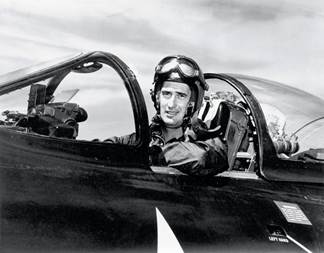
Williams flew an F-9 Panther (quick trivia – he wore #9 for the Red Sox). His first two missions were to familiarize him with the potential targets and plane formations. On his next mission, the first in combat, he dropped his load of bombs and headed back up out of range of antiaircraft fire. He did not realize that he had already been hit. “The funny thing was I didn’t feel anything. I knew I was hit when the stick started shaking like mad in my hand. Then everything went out, my radio, my landing gear, everything. The red warning lights went on all over the plane.”
The tail of Williams’ plane was on fire, but he could not see that. The standard order for that situation was to eject. Glenn and other pilots were yelling over their radios for him to eject, but his radio was out. Williams did not want to eject in any event because his 6’4” frame was shoehorned into the cockpit and he had heard about serious injuries caused by the ejection process.
He was also flying in the wrong direction to return to safety. Other pilots came alongside and led him to the nearest airfield. Williams fought to hold his plane together and crash landed, skidding several thousand feet on the runway. Glenn said “He slid it in on the belly…came up the runway…before he was able to jump out and run off the wingtip.” His first combat mission had almost been his last. In less than 24 hours, he flew out on his next mission.
At a charity dinner honoring Williams in 1988, John Glenn told the crowd “Ted only batted .406 for the Red Sox. He batted a thousand for the Marine Corps and for the United States.”
Williams time in Korea added to his .400 batting average legacy. Before he was recalled to the Marines in 1952, he got in a few games with the Red Sox. He got 4 hits in 10 at bats, an even .400 for the season. After he returned from Korea late in the 1953 season, he got 37 hits in 91 at bats, an average of .407. So combined with 1941, he put together three .400 seasons.
M*A*S*H in Korea – A Baseball Story: Last week, David Ogden Stiers died. To M*A*S*H fans like me (originals and reruns), Stiers will always be Major Charles Emerson Winchester III, the imperious but excellent doctor who served as a worthy adversary to his irreverent fellow doctors Hawkeye and B.J.
Charles played a key role in one of my favorite episodes, a well-crafted story that covers a full year (and a baseball season) in about 28 minutes. It first aired in 1980 and is titled “A War for All Seasons.” There are several story lines, but I will strip away those not related to the baseball tale.
The episode starts on New Year’s Eve of 1950 as the MASH unit is ringing in the beginning of 1951. Colonel Potter is dressed as Father Time with “1950” on his beard. Corporal Klinger is the New Year Baby with a “1951” sign. Father Time leads a toast: “Here’s to the New Year. May she be a damn sight better than the old one. And may we all be home before she’s over.”
In a later scene, Potter and Klinger are playing catch. Klinger is bragging about the Dodgers, and so Potter (from St. Louis) bets Klinger $20 that the Cardinals will win the pennant. They are so sure that the war will be over before the end of the season that they decide to take the standings as of July 4. The Dodgers are not only in first place on July 4, but look like they are running away with the pennant.
Klinger takes his winnings from Potter and offers a new bet: he will give 2 to 1 odds and Potter will win if any team other than the Dodgers takes the pennant. The scene is shown below with Potter on the left, Klinger on the right, and Hawkeye and Charles (shiny head) looking in. Potter likes the odds and offers to increase the bet by $50. Klinger feels that is too rich for him, but Charles stakes Klinger.
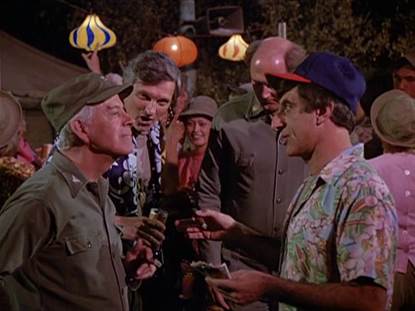
Charles is driven by pure greed. He otherwise has no interest in baseball. With his typical cultural snobbery, he dismisses baseball as being played by people wearing funny knickers and spitting tobacco. He is mocked for asking how many carats there are in a baseball diamond.
As the Dodgers increase their lead [they are ahead by 13 games on August 11], Charles seeks more action and keeps increasing the odds to entice bets. Colonel Potter finally bites and takes a $100 bet when the odds get to 6 to 1. As any fan familiar with baseball history knows, this would be about the time that the Dodgers collapse. Charles is crazed as the weeks go by and the Giants keep winning. He blames Klinger who starts hiding from him. The Giants and Dodgers tie at the end of the season and have a 3-game playoff.
The teams split the first two games. The final game is broadcast over the camp loudspeakers. Bobby Thomson wins the pennant for the Giants by hitting the “Shot Heard ‘Round the World” – and in this case that included Korea. With the announcer yelling “The Giants win the pennant! The Giants win the pennant!”, everybody but Charles and Klinger rejoice.
The war of course does not end in 1951. So the camp sadly repeats its New Year’s Eve party with Colonel Potter and Corporal Klinger in their same roles, but with new dates. Potter gives the same speech, this time hoping the war is over before the end of 1952.
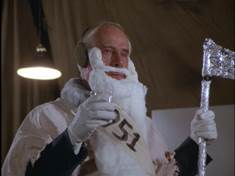
The war does not end in 1952. See Ted Williams above.
When Bobby Thomson hit his homer to win the 1951 NL pennant, the batter on deck was Willie Mays, the NL Rookie of the Year. Willie was drafted a few months later and left for the Army after playing only 34 games with the Giants in 1952. He also missed the entire 1953 season. The silver lining is that he learned the basket catch from Al Fortunato while stationed at Fort Eustis in Virginia. Willie did not see combat.
Corporal Klinger and the American Association: Corporal Max Klinger was played by Jamie Farr, a native of Toledo, Ohio. This fact carried over to his role in M*A*S*H where he was often seen with a Toledo Mud Hens cap and jersey.
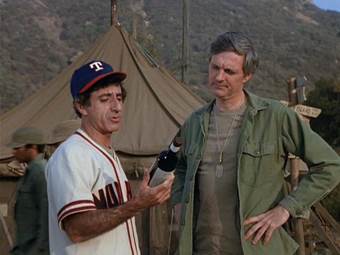
The Mud Hens are a storied minor league team and were well known to me as a 10-year-old in 1951. I closely followed the Kansas City Blues over the radio (announcer Larry Ray), and one of their rivals was Toledo. There were eight teams in the league, the American Association, and upcoming stars often passed through (e.g., Mantle and Mays for part of 1951). With my recollection refreshed by Baseball Reference, here are the 1951 teams and their major league parents: Kansas City Blues (Yankees); Toledo Mud Hens (Tigers) ; Minneapolis Millers (Giants); St. Paul Saints (Dodgers); Milwaukee Brewers (Braves); Louisville Colonels (Red Sox); Indianapolis Indians (Pirates); and Columbus Red Birds (Cardinals).
Babe Ruth, Ted Williams and Willie Mays: After Babe Ruth retired in 1935 with 714 homers, Ted Williams and Willie Mays were in line to break Ruth’s record. But war intervened.
Williams ended up with 521 career homers and arguably might have challenged Ruth if he had not missed most of five seasons. Mays has even a stronger case. The baseball card below shows the status at the beginning of 1973 when Willie had 654. He hit another six before retiring to finish at 660. This left him 54 homers short of Ruth. What if he had played full seasons in 1952 and 1953? When he came back in 1954, he hit 41 homers. Assuming he would have had a similar number in 1952 and 1953, he would have surpassed Ruth. In the end, it was Hank Aaron who broke Ruth’s record and went on to hit 755.
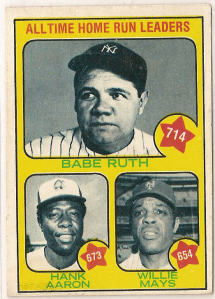
Hammerin’ Hank later gave way to Barry Bonds who hit 762 in his storied career. Please note that storied is an anagram of steroid.
Ruth is still the greatest. Remember, in his first five full seasons (1915-1919), he was mostly a pitcher. He had an aggregate total of nine homers from 1915 to 1917. Even when he added outfield duties to get more at bats in 1918 and 1919, it was still the dead ball era and his homer totals were 11 and 29. In 1920, the live ball came to baseball and Ruth became a Yankee – he averaged 44 homers a year over the next 15 seasons.
The Oscars and Telluride: For the last seven years, over Labor Day Weekend, Rita and I have attended the Telluride Film Festival. Every year, we have seen the ultimate Oscar winner for best picture. We have been very lucky.
This year, we had three chances out of the nine nominees to keep our streak alive: Darkest Hour, Lady Bird and Shape of Water. Our money was on Shape of Water, but some of the early awards to Three Billboards and Dunkirk kept us at a high level of anxiety. With Faye Dunaway and Warren Beatty getting it right this year, we cheered when the Oscar going to Shape of Water. We always have a bit of Telluride bias.
Last week, on the first day available, we bought our passes for this year’s festival. It’s a good thing we did. They sold out in 48 hours. Mountains, see you in a few months.
[Movie Trivia: 20 years ago this week, the world was introduced to The Big Lebowski. We were on vacation in St. Simons, Georgia, with Rich and Mary Ellison and took in the show. We were not quite sure what to make of it, but in the long run (and after seeing it more than once on television), I have concluded that it is a mixture of a classic and a guilty pleasure. The original release date of March 6 is a high holy day of Dudeism, the religion, philosophy or lifestyle inspired by the title character a/k/a “The Dude” (Jeff Bridges). The official organizational name is The Church of the Latter-Day Dude, and an estimated 450,000 Dudeist priests have been ordained. This is not a joke. My friend John Shipp is one of them and is authorized to officiate at weddings. Long live The Dude.]
Lonnie’s Jukebox – Otis Redding: A couple of months ago, David Welte and I exchanged emails about media coverage of events from fifty years ago – late 1967 and early 1968. The subject: Otis Redding.
1967 was quite a year for Redding. As a songwriter, his “Respect” was covered by Aretha Franklin and went to #1. He wowed the crowd at the Monterey Pop Festival. In the fall of 1967, he worked on a song with co-writer Steve Cropper of Booker T. and the MG’s, the house band at Stax Records. In November, they recorded some tracks for the song and then Otis went back out on the road. On December 10, he died in a plane crash.
The death was tragic, but there was business to be done. Cropper received a phone call from Jerry Wexler of Atlantic Records, the company that distributed for Stax and its subsidiary label Volt. Wexler demanded that Cropper quickly produce a record from Redding studio tracks that had not yet been turned into records. Cropper chose the song he had been co-writing with Redding. He stayed up 24 hours mixing the tracks, adding some items (like the seagulls) and deciding to include the whistling by Redding. And that is how “(Sittin’ On) The Dock of the Bay” was produced. It was released on January 8, 1968, and on March 16 started a 4-week run at #1. It was Redding’s only #1 record.
Redding was the first artist in chart history to have a posthumous #1 record. In 1971, it happened again when “Me and My Bobby McGee” went to #1 after Janis Joplin died. In 1972, Jim Croce released an album that included the wonderful “Time in a Bottle.” After he died in a plane crash in September of 1973, the song’s themes of mortality and lack of time took on even more meaning. The album track started getting airplay, and so Croce’s label released the song as a single. It went to #1 in January of 1974.
Click here to listen to Otis Redding’s masterpiece.
And here for Janis and here for Jim.
